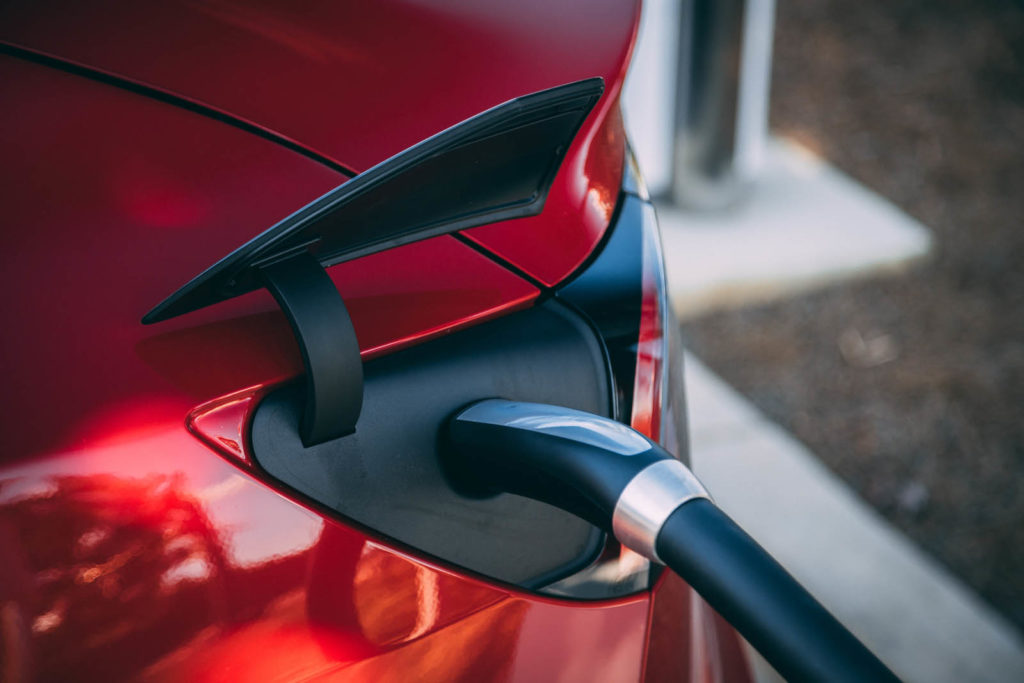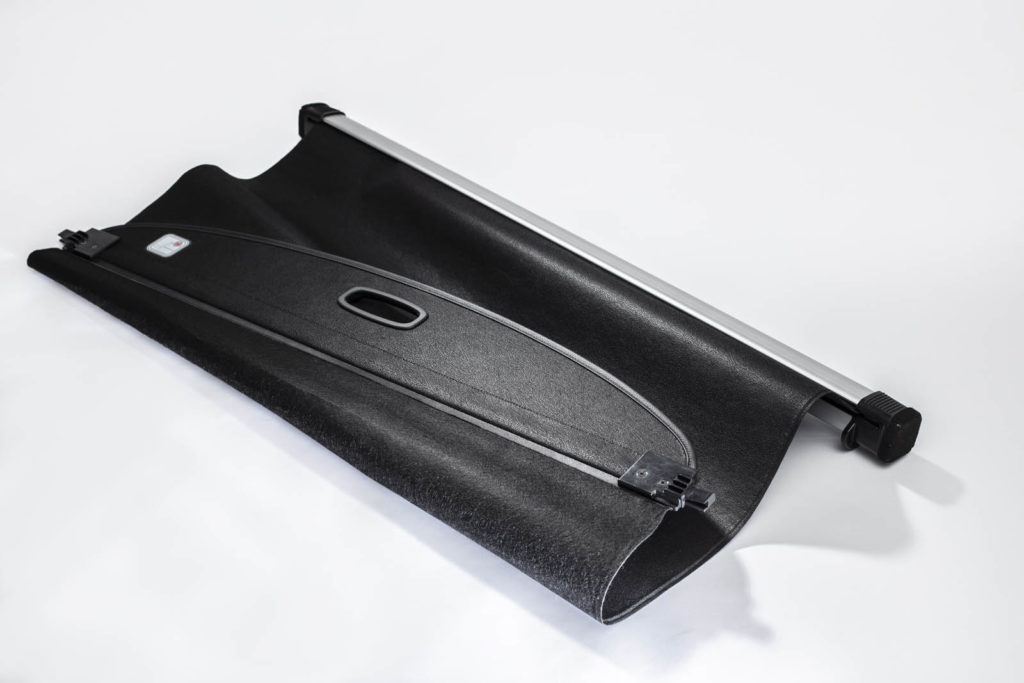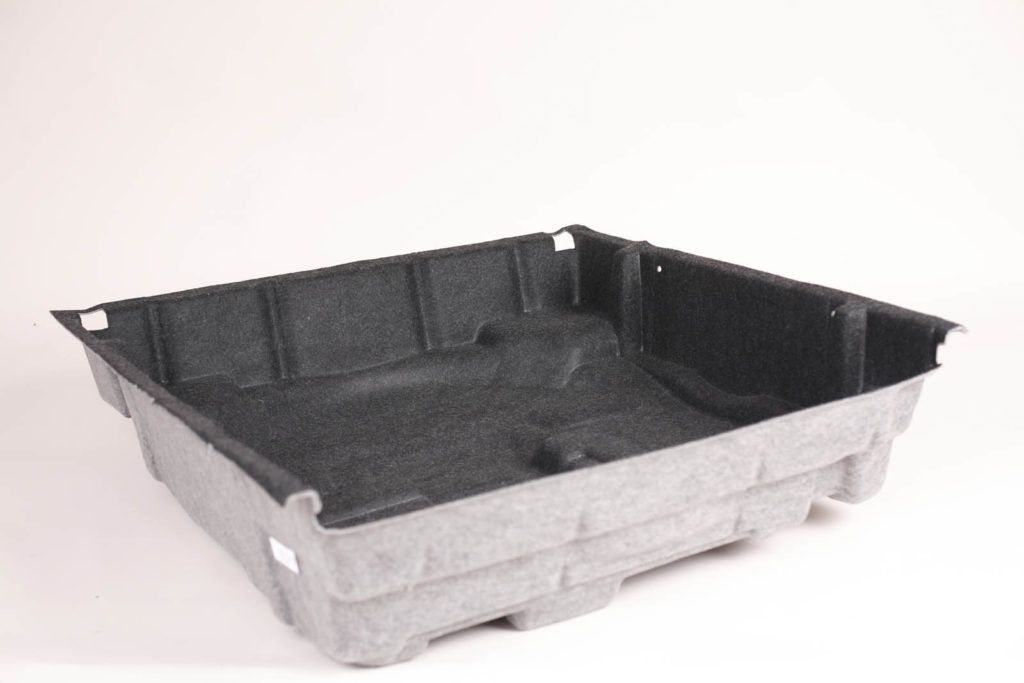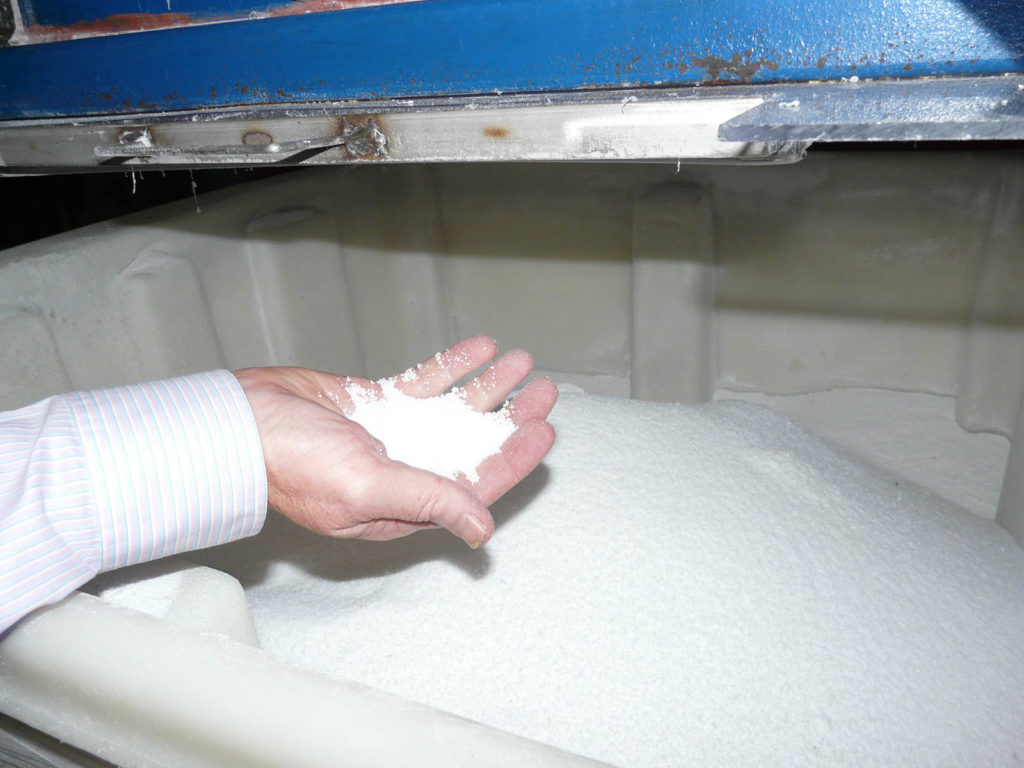
The evolution of electric vehicles relies on innovative nonwoven textiles.
by Debra Cobb
Nonwovens are playing an increasingly important role in automotive components as the evolution of electric and hybrid vehicles (EVs) create an imperative for transportation textiles that are lighter, quieter, stronger, cleaner and easier to recycle. Often unseen, nonwovens are found in backings for automotive body cloth, headliners and tufted carpets; in trunk liners and speaker covers; and in all manner of filter systems, just to name a few of their uses.

Nonwovens make EVs lighter
With charging stations often hard to find in the U.S., enabling EVs to travel longer distances per charge is a must. Replacing injection-molded plastics with needle-punch and nonwoven composites can reduce the weight of standard automotive components by as much as 50 percent.
Milliken & Co.’s Textile Division is moving to nonwovens for wheel well liners and airfoils to promote fuel efficiency and recyclability, according to Jeff Stafford, vice president nonwovens. “Molded fibe-reinforced plastics are not easily recyclable,” he adds.
“For fuel efficiency, most vehicles on the roads today have aeroshields,” says Gale Shipley, automotive sales manager for Dalco Nonwovens LLC. “These parts reduce drag under the car, thus increasing gas mileage by 3–5 miles-per-gallon.”

Balancing cost and comfort
The cost of batteries and electronics is a barrier to the adoption of EVs. Using nonwovens for lithium battery casings, trunk liners, and as replacements for tufted carpets and seating foam reduces secondary costs as well as weight.
Needle-punch wovens from Filc d.o.o., Freudenberg Performance Materials’ recent acquisition, are used in seating as a barrier between the metal and a thinner layer of foam, providing OEMs with the same level of comfort found in a standard 4” foam layer. “You don’t want to have your posterior sitting on metal,” says Brett Woodson, business segment manager, automotive, for Freudenberg.

Another Freudenberg development is a nonwoven cargo screen, embossed to resemble leather, which first gained popularity in Asia. The trend is moving to Europe and the U.S., according to Woodson.
Using recycled fibers to create these materials, and reducing the volume of VOCs (volatile organic compounds) emitted by plastics and resins, is a bonus. “Our customers have become more serious about recycled content,” says Woodson. “Some OEMs are requiring that their interiors be made out of recycled materials at a minimum of 25 percent. Freudenberg specifically developed a primary backing for a customer for a 2022 tufted carpet program made from 90 percent recycled PET.”
Some 55 percent overall of Milliken’s raw materials used in their automotive products have been recycled, including up to 500 million plastic bottles annually, according to Stafford.

Sound absorption materials
“Electric vehicles are creating a whole new market for sound absorption,” says Stafford. “Millennial consumers using mobile phones and entertainment and navigation systems expect new mid-level vehicles to have the ultra-quiet interiors of luxury vehicles.”
Dalco Nonwovens / Global Felt also manufacture fibrous nonwoven aeroshields which enhance acoustical properties vs. glass/polypropylene or plastic versions.
“The current challenge in the industry is the entry of electric vehicles,” agrees Shipley. “Because there is no engine noise to muffle outside–inside noises, the nonwoven products must be engineered to deter that irritation to the passengers.”
Introduced in 2018, HPAM® High Performance Acoustic Media by Monadnock Non-Wovens LLC addresses the challenge of sound absorption and improved acoustics in light-weight aluminum bodies. Constructed with 100 percent virgin polypropylene, HPAM is lighter than competitive products, and is recyclable at its end-of-life.

“We understand that the electric cars are quiet, so other noises need to be suppressed,” says Monadnock managing director Keith Hayward. “So engine noise could be replaced by road or wind noise, or whining from electrical motors which could be a different frequency. Many car companies have defined acoustic profiles and they choose which ones to apply to the model they make.”
“Today’s acoustic packages are quite different in order to deal with higher pitch frequencies,” adds Woodson. Freudenberg’s acoustic pad solution was specifically developed to meet broad demands of car acoustics, whether EV or combustion.
The E-commerce delivery opportunity
Outside of Europe, sales of electric cars plateaued in 2020. In addition to the COVID-19 pandemic, the 2020 rollback of fuel efficiency standards in the U.S. put a damper on the market for EVs. If the Biden administration establishes environmental policies that encourage consumers to drive EVs, that trend could soon be reversed. The largest U.S. automaker, General Motors (GM) announced recently that it plans to only sell electric cars by 2035, and go fully carbon neutral by 2040.
The explosion of e-commerce driven by the pandemic is encouraging the development of EVs for mid-range and last-mile deliveries. In January 2020 the World Economic Forum predicted that the number of delivery vehicles in the top 100 cities globally will increase by 36 percent until 2030, with emissions from delivery traffic growing by 32 percent. Those numbers will surely increase.

Early this year, GM announced a new division focused on electric delivery vehicles, called BrightDrop, with Federal Express the first customer. The announcement followed Rivian’s 2019 commitment to deliver 100,000 electric delivery vans designed for Amazon, and Ford’s introduction of its E-Transit cargo van late last year.
“Delivery companies such as Amazon, FedEx and UPS are rapidly electrifying last-mile delivery vans in a bid to reduce carbon emissions, maintain strong sustainability-focused brands and save money on fuel costs,” writes Katie Fehrenbacher, senior writer and analyst, transportation, at the GreenBiz Group.
Electric versions of heavy-duty and long-haul trucks from the likes of Volvo, Daimler, and Tesla are not far behind. And while delivery vehicles may not sport all the bells and whistles being designed into passenger automobiles, you can be sure that commitments to fuel efficiency and sustainability spell good news for the suppliers of nonwoven textiles.
Debra Cobb is a freelance writer with extensive experience in the textiles industry. She is a regular contributor to Advanced Textiles Source.
 TEXTILES.ORG
TEXTILES.ORG


